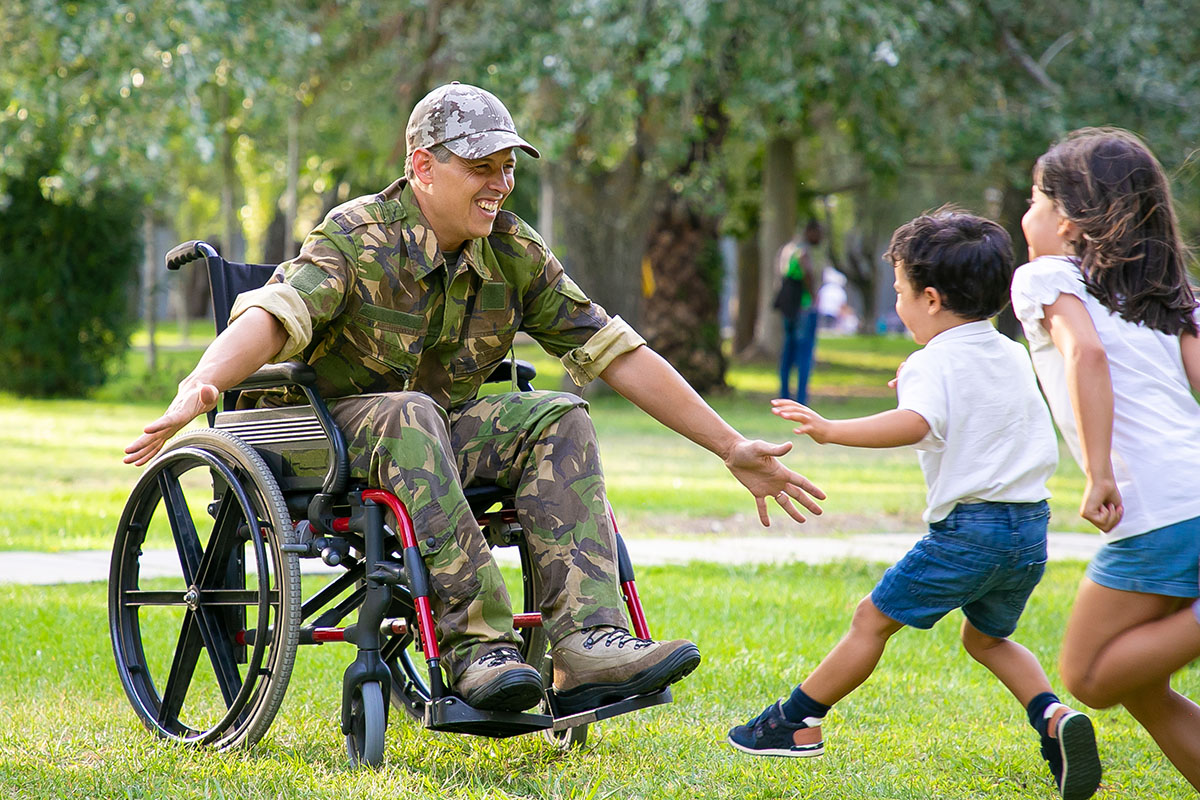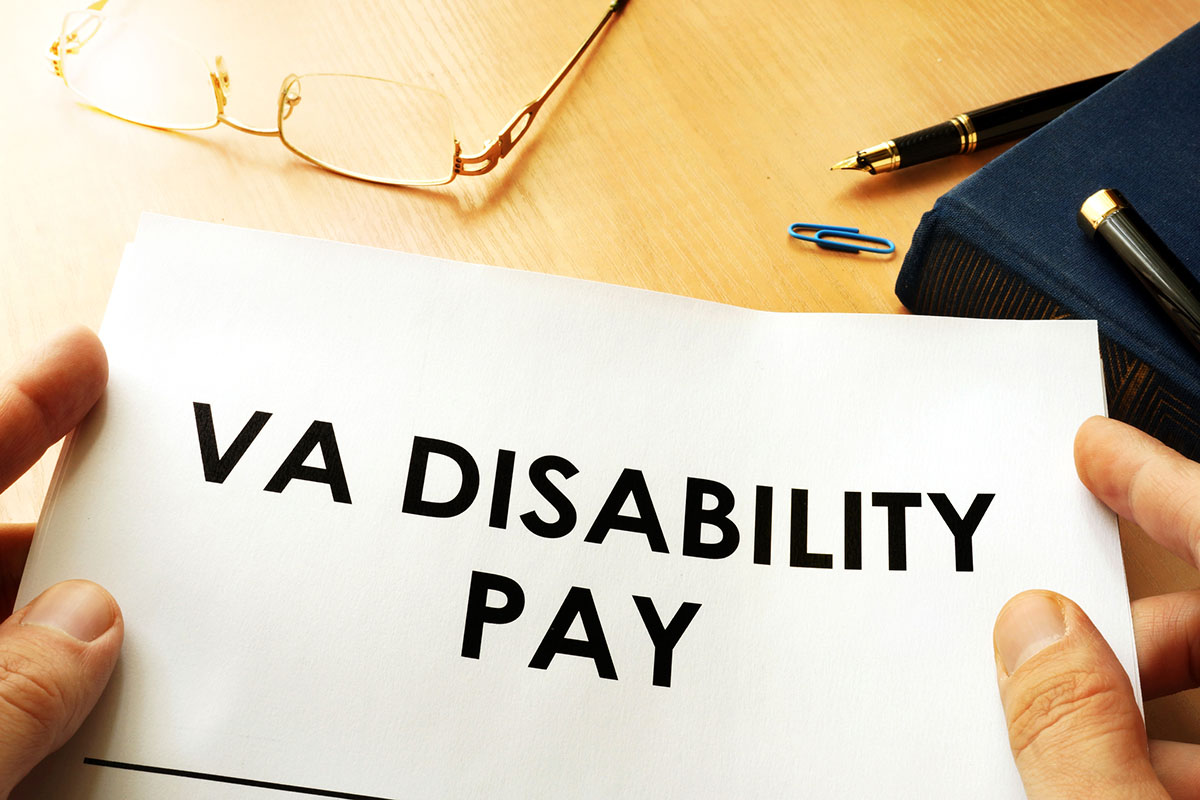VA Disability for Toxic Exposure
During their time in service, veterans can encounter toxic exposure to substances and environmental hazards that result in illnesses. VA disability benefits are available to veterans who meet specific requirements for toxic exposure illnesses. There are a few different sources of toxic exposure that are common to veterans.
VA Disability Benefits for Illnesses Caused by Toxic Exposure
- Radiation
- Asbestos
- Camp Lejeune Water Contamination
- Agent Orange
- Burn Pit Exposure
For many veterans, exposure to toxic contaminants occurs at least once during their time on active duty. The level and duration of exposure may vary. Over the years, medical professionals have learned more about the harmful effects of exposure to these substances. As a result, the VA has updated disability compensation eligibility criteria to meet the growing needs of toxic exposure among veterans.
While each exposure illness has its unique set of criteria, eligibility is dependent upon a discharge that is not dishonorable and proof that the service member served at a location or in a position that exposed them to the toxic substance.
How Does Chemical and Toxic Exposure Occur?
Throughout their military career, service members may be exposed to toxic chemicals or other environmental hazards. Specific job duties can be at higher risk for being exposed to harmful substances. Working with X-rays or radioactive material can put someone at risk for radiation exposure. Construction materials such as flooring, roofing, or insulation can expose handlers to asbestos. Even everyday cleaning products can contain harmful chemicals that may lead to illnesses in the future.
Symptoms may not appear for many years after exposure and sometimes long after military service has ended. For veterans, it is vital to keep records associated with duty assignment locations, duty position assignment, and all medical records related to military service. These documents will help to determine service connection if any illness develops from military toxic exposure.
Some common toxic exposure illnesses include many types of cancers, respiratory conditions, Parkinson’s disease, and fertility problems. Veterans should apply for disability compensation and health care benefits provided by the Veterans Administration along with keeping informed about current information related to possible toxic exposure during their time in the military.
VA Disability Benefits for Illness Caused by Toxic Exposure
Veterans may be entitled to disability compensation and VA health benefits for illnesses caused by exposure to toxic substances while on active duty. Common diseases caused by military toxic exposure are detailed below.
Radiation
Service members who engaged in radiation-risk activities while on active duty may be eligible for VA benefits related to illnesses that resulted from service. Some of these radiation-risk activities included working as an X-ray tech, nuclear medicine, or radiography. Troops assigned to post-war Hiroshima or Nagasaki or served as a POW in Japan are also eligible. Any type of atomic testing activity also appears on the VA’s list of radiation-risk activities.
The VA recognizes that certain illnesses result from radiation exposure. These conditions are called presumptive conditions. If a veteran has a disease on the presumptive condition list and conducted a radiation-risk activity, they need not prove service connection on their disability claims.
Presumptive conditions include the following:
- Cancers of the bone, bile duct, digestive system, urinary tract, and lungs
- Leukemia
- Lymphomas
- Multiple myeloma
Veterans who believe their illness is a result of radiation exposure should file a claim for disability compensation and apply for VA health care.
Asbestos
Asbestos is a toxic substance found in older construction materials. If you worked at construction sites, shipyards, demolition sites, mines, or mills, you may have encountered asbestos. In addition, Afghanistan veterans and Southwest Asia veterans who were commonly exposed to the demolition of older buildings could also be at an increased risk.
Asbestos can cause respiratory illnesses such as asbestosis, pleural plaques, lung cancer, and mesothelioma. Symptoms start with shortness of breath, cough, and chest pain and can take anywhere from 20-50 years to develop.
Disability compensation and VA health care may be awarded to veterans who develop a condition in connection with exposure to asbestos while on active duty.
Camp Lejeune Water Contamination
If you spent time at Marine Corps Base Camp Lejeune or Marine Corps Air State (MCAS) New River in North Carolina between August 1953 and December 1987, you might have been exposed to contaminated water.
Those stationed at the military base or spent at least 30 cumulative days there for training and have one of the presumptive conditions identified by the VA may be entitled to disability compensation and VA health care. The presumptive conditions associated with water contamination at Camp Lejeune include:
- Adult leukemia
- Aplastic anemia
- Bladder, kidney, and liver cancer
- Multiple myeloma
- Non-Hodgkin’s lymphoma
- Parkinson’s Disease
Veterans with any of the above conditions should file a disability claim and apply for VA health care benefits.
Family members affected by contaminated drinking water can also receive benefits. They will need to file a disability claim, including documents that prove a relationship to the service member and residency on the military installation. The VA suggests including a VA Form 10-100686b, Camp Lejeune Family Member Program Treating Physician Report to assist in the claims process, although it is not required.
The VA may also reimburse medical expenses for the above presumptive conditions or one of the following:
- Renal toxicity
- Esophageal cancer
- Hepatic steatosis
- Scleroderma
- Female infertility
- Miscarriages
- Lung cancer
- Breast cancer
- Neurobehavioral effects
To qualify, family members need to show payment of expenses related to the illness during one of these time periods:
- January 1, 1957, to December 31, 1987 (if you lived at Camp Lejeune during this timeframe, reimbursable expenses must have been paid on or after August 6, 2012, or up to 2 years prior to application date)
- August 1, 1953, to December 31, 1956 (if you lived at Camp Lejeune during this timeframe, reimbursable expenses must have been paid on or after December 6, 2014, or up to 2 years prior to application date)
Agent Orange
Agent orange is a tactical herbicide used to limit vegetation during the Vietnam War. The medical community has since learned that exposure to this herbicide can cause cancer and other illnesses. Vietnam veterans would have presumptive exposure to agent orange if they served in Vietnam or on a U.S. military vessel in Vietnam or perimeter duty in Thailand between January 9, 1962, to May 7, 1975.
The VA has recently added bladder cancer, hypothyroidism, and Parkinsonism to the list of presumptive conditions connected to agent orange exposure. If the VA denied your claim for one of these three conditions in the past, they will automatically reconsider the claim. You do not need to resubmit the claim.
The list of presumptive conditions includes, but is not limited to:
- Prostate cancer
- Multiple myeloma
- Non-Hodgkin’s lymphoma
- Some soft tissue sarcomas
- Hodgkin’s disease
- Chronic B-cell leukemia
- Respiratory cancers
- Parkinson’s Disease
If you believe your illness results from exposure to agent orange, you should contact veterans affairs about VA disability benefits and health care related to toxic exposure.
Burn Pit Exposure

Veterans who served in Southwest Asia since August 2, 1990, or Afghanistan or Djibouti after September 11, 2001, were likely exposed to toxic fumes caused by burn pits, a common practice of destroying waste through open-air combustion.
These burn pits contained several harmful products such as toxic chemicals, paint, human waste, metals, rubber, medical waste, and munitions. Toxic chemicals in pit smoke particulate matter can affect many systems of the human body: respiratory, cardiovascular, skin, and internal organs.
In 2014, the VA established the Airborne Hazards and Open Burn Pit Registry to conduct further research into illnesses developing in veterans with burn pit exposure. Veterans are encouraged to register their exposure and any symptoms to learn more about burn pit toxic exposure. In some cases, on-site, in-depth studies are being conducted with veterans experiencing respiratory illness, shortness of breath, or constrictive bronchiolitis.
On Veterans Day 2021, President Biden announced that his administration would emphasize the need to aid burn pit illness veterans by mandating that the VA review rare respiratory cancers as an addition to the presumptive illness list. So far, there are only three presumptive illnesses for burn pit exposure: asthma, rhinitis, and sinusitis.
The administration hopes to get much-needed medical help to burn pit exposure veterans promptly, unlike the decades-long process their Vietnam-era comrades faced with agent orange exposure.
How Does DAV Help Veterans with Toxic Exposure?
There are several benefits for veterans who experience complications from military toxic exposure. Many veterans choose to get help with the complicated process of filing a disability claim. One service organization that can help veterans with toxic exposure is Disabled American Veterans (DAV). The DAV is a nonprofit organization that fights for veterans’ rights in Washington, D.C., informs veterans and family members of benefits they are entitled to, and assists them in applying for benefits.
Local DAV service officers will assist veterans in gathering evidence, submitting claims, and representing veterans during appeals hearings. Through helping thousands of veterans each year, they’ve gained experience that can be helpful when trying to establish a service connection for VA disability toxic exposure.
The DAV can also connect veterans with other resources available based on the veteran’s exposure category. Veterans are encouraged to communicate with their local DAV representative.
VA Disability Benefits for Toxic Exposure
Veterans exposed to toxic chemicals or environmental hazards during their active-duty military service may develop illnesses because of their exposure. These veterans may be entitled to disability compensation and VA health care for conditions resulting from toxic exposure providing they meet eligibility requirements.
To qualify, the veteran must not have a dishonorable discharge. Other eligibility requirements include specific duty location timelines and diagnosis of an approved toxic illness. If a veteran has a condition associated with toxic exposure, they should submit a disability claim for review by the Veterans Affairs.
Some of the most common sources of toxic exposure are radiation, asbestos, Camp Lejeune water contamination, agent orange, and burn pit exposure.
The VA continues to research how each of these contaminants affects the health of veterans today. In addition to the VA, many service organizations and nonprofits are focused on educating and supporting veterans suffering from toxic exposure.
Several organizations exist to help veterans who may be dealing with toxic exposure illnesses. The DAV is one organization that can help veterans to submit a disability claim or appeal packet. These experienced representatives are skilled in providing appropriate evidence to support service connection, a common reason for disability claims denial. Getting help with the claims process may ensure you receive your benefits faster.




